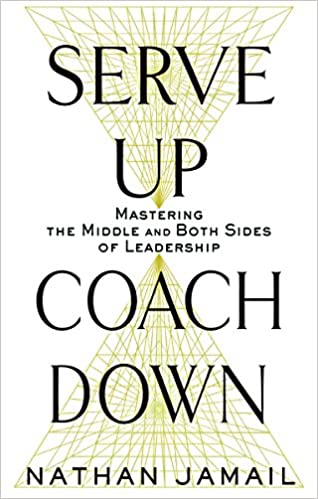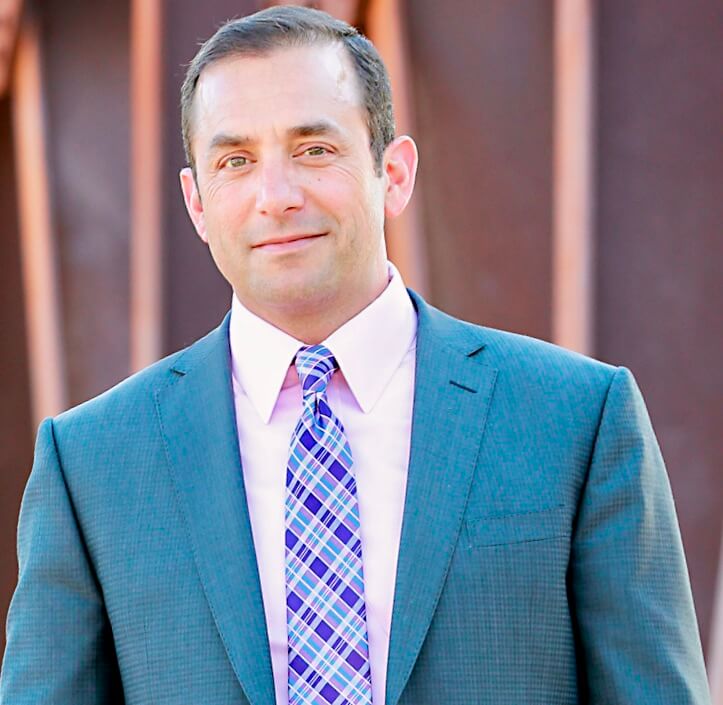It’s been almost three years since I published by book, Serve Up, Coach Down and as many start to head back to the office, it remains more relevant than ever.
I am particularly proud of this book because I was able to share my direct experience as a Leader in the Middle as well as those of my clients. My goal is always to make you, my audience, a better leader by sharpening your coaching skills. I want you to win, so I’ve used this book as a medium to clearly outline useful strategies that I know will help your career advance. Ultimately, I’m here to support you to build stronger teams, thriving cultures and reap the rewards of serving up to your boss.
In today’s blog, I want to take a more personal approach, and answer some of the frequently asks questions about this book.
As always, let’s jump in!

Serve Up, Coach Down by Author and Keynote Speaker, Nathan Jamail.
How does this book compare to other servant leadership books written on the past?
Serve Up, Coach Down, takes a more in depth look at being a Leader in the Middle (LIM). It uses a specific methodology to expand on previously limited ‘servant leadership’ concepts. Instead of focusing on serving your team, the book revamps the approach to serving those that lead us.
I often get asked why I follow this ethos, but to reframe the question,
How can we not cater to the people that hire us, pay us, and lead the organizations that were we work?
Taking it one step further, the book helpfully points out that as a LIM, we need to enable our teams through coaching instead of coddling. It removes the misconception that our job as a boss is to make our employees’ lives easier by removing their problems, defending them, or protecting them from perceived slights. The idea is to provide a better work environment where they can learn to problem-solve and improve their cognitive skills. This is how they become better future leaders and stronger team members. It’s the ultimate win-win situation for every organization.
But is this book relevant to all organizations?
This book is primarily for organizations with LIMs and most often, this is a common organizational position in most (if not all) businesses. I have over 25 years of leadership experience in the corporate world (and as a small business owner) and every company that I have worked with or dealt with, on any level, has struggled with one or all of the issues in this book.
I’ve been a LIM, I know LIMs, so I know that every leader that leads another leader stands to benefit from implementing these principles; it is the ultimate guide to create a #winningculture.
Who qualifies as a LIMs and does this include lower-level managers?
A middle manager can be a CEO, VP, director, manager, or supervisor.
A middle manager is anyone that has a boss and has employees.
No one likes to be called a middle manager because they see it as an insult. I can’t stress how much this is a limited view of the organizational structure. There is great power in being a LIM, and from my experience and research, I can empirically say that it is the most powerful leadership position in the company. After all, this is why middle managers make up over 90% of the leaders in business today. And I wanna let you in on a little secret..really 100% of leaders are LIM’s in some capacity…because even the business OWNER has a boss..the customer.
Why are LIMs the most powerful leaders?
LIMs are the necessary bridges to leadership and staff. They have the responsibility and power to take the vision or direction of their leaders and own it as their own. They are not only high-level strategists, but they serve as the operational and execution arm in each entity. A great LIM takes a vision and turns it into reality. There is no success without execution.
What inspired you to write this book?
I wrote this book because I remember by own journey as a LIM. At the time, ‘servant leadership’ meant something entirely different and I found this outlook way too limited in applicability and scope.
As my career progressed, I’ve learned the importance of thinking outside the box and this is what brought me to the Serve Up, Coach Down strategy. This shift in alignment has benefited not only my career, but has impacted thousands of people I work with each year. It is a tried-and-true methodology that I have taught with tangible success in hundreds of organizations, regardless of company size or sector.
My goal is to make you better than you already are as a leader. I want you to implement and live by beliefs that I know will help improve your day-to-day operations and commitments, in and even outside the office. This is the true power of a leader in the middle.








